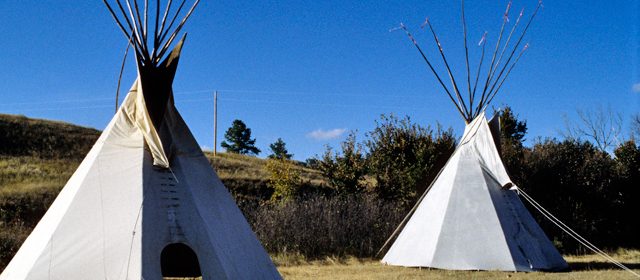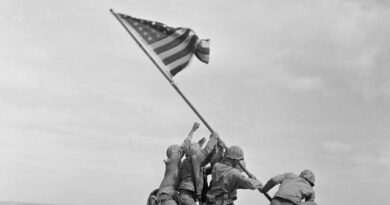The Lakota Tribes of the Great Plains
Culture Facts
Where: Originally populated all the Rocky Mountain ranges but pushed out further west by white settlers to Missouri and South Dakota.
History: White fur trade greed, broken treaties and endless small battles resulting in the near extinction of the race.
How to join in: you can visit a few remaining settlements to experience Indian life, but beware that this erodes their unique culture.
The Sioux are Native American and First Nations people in North America. The term can refer to any ethnic group within the Great Sioux Nation or any of the nation’s many language dialects. Their territory covers some 200,000 km2 in the present day state of South Dakota and neighboring states.
The Lakota, Dakota and Nakota Nation (also known as the Great Sioux Nation) descends from of the original inhabitants of North America and can be divided into three major linguistic and geographic groups: Lakota (Teton, West Dakota), Nakota (Yankton, Central Dakota) and Dakota (Santee, Eastern Dakota). The total number of native North Americans is approximately 1.5 million, of which around 100,000 are Lakota. They reside near the Sacred Black Hills of South Dakota.
The Lakota were one of the original native Americans tribes, who lived and hunted all over the Rocky Mountain ranges before the arrival of European travellers. The Lakota were originally part of the seven council fires made up of 7 bands: 4 Dakota, 2 Nakota and one Teton band, also known as the Lakota.
Many Tribal Lands
In the 17th Century they lived in Wisconsin, and in the forests in southern Minnesota where they had established reservations of many tribal generations. The name “Sioux” of which the native tribes are commonly known originates from the tribal name “Nadowe-is-iw”, the area of treacherous snakes near their settlements.
In 1680 the Lakota (who called themselves “tiyospaye” meaning ‘extended family’) were identified as living further west, on the upper Mississippi in central Minnesota. Tribal wars over the fur trade forced the Lakota out west, from the forests and lakes of Minnesota to the Great Plains west of the Mississippi and later to South Dakota, near the Missouri River.
Warfare
During the gold rush in the 1840’s, the white traders and traveller brought alien diseases to the Indians as well as accelerated buffalo hunting for the fur trade. This caused hostility and battles with the emigrants and traders. In 1851, a series of treaties called the Fort Laramie Treaty were made between the US and the many tribes. The treaty was created to guarantee peace between the white Americans and the numerous tribes in the Rocky Mountains. However, the white traders were hungry for the rich blood of the buffalo fur trade and every treaty and every agreement was ever made between the United States government and the Lakota people were violated and broken before the ink was even dry. This culminated in numerous battle, the most legendary and victorious for the tribes being the Battle of Little Bighorn.
The Lakota are a fiercely strong and powerful tribe whose leaders and warrior have achieved the status of legends the world over, like Red Claw, American Horse, Young Man Afraid of His Horses, Red Horn Buffalo, and Crazy Horse. Crazy Horse is the Lakota’s hero, and held in high esteem and legend by the tribe. The white man was his sworn enemy and he never gave up the fight for his people’s land or lower his tribe status by making contact or speaking with a white man, and speaking his mother tribe’s tongue. He lived and died a true Lakota.
They are not the kind of people to get on the wrong side of, but fight their battles with strength and honour. They have a special relationship with their horses, which they see as their brothers, and the horse and his master will care and protect each other in times of battle. In the early days when the cavalry came to the area the Indians would come riding in vast numbers with just sticks or even with their bare hands and they would just hit these cavalry men, but never kill them and then ride away. The Lakota believe that even though someone might be your adversary you didn’t necessarily want to kill him, because you couldn’t “count koo” on him to bring honour on yourself. Counting koo is a way of showing bravery without violence. If a Lakota walked up to you and touched your nose and walked away, all of your comrades will look at you with shame because you allowed the enemy to walk right up to you, touch you and walk right away still alive.
Folklore
The theories of Koo are also felt in their folklore, which intentionally ridiculous the Lakota enemies. The story of how the white man got his name is an intricate part of the Lakota’s folklore. They believe that during the cold and snowy winter, the Lakota were well camouflaged in their dwellings. One day, they heard noises outside and saw a big hairy white face outside, all dressed up, and wondering through the lodges. The Lakota used to keep bear fat high up in the trees where dogs and wolves could not reach it. The white man began to climb the tree and eat the bear fat, then strolled right through the camp. Thus the Lakota word for white man is Washetrom – or the man who came into camp and stole the fat.
Tee Pee Reservations
Lakota tribes dwellings are known as teepee’s and are constructed with twelve poles. The Lakota were early advocates of Feng Shui in the way they constructed their dwellings. The tenth teepee pole is the one that comes up and that has to point to the Morning Star and this is the direction and the door is always facing to the east, the space which represents new life, created each and every day.
Modern Day Lakota
Today, Lakota survival is still under threat, but not as you may belief through neither warfare, destruction of land or starvation. The popularisation of Lakota culture, by academics, cultural analysts and the general public is causing a cultural erosion, and a romanticism of the traditions of the tribes causing inaccurate stereotypes of the few remaining direct descendent of the tribes.
MORE INFORMATION
SIOUX HERITAGE
The official picture of Sioux Heritage from the tribes people themselves.
Tribute to the Oglala Lakota Sioux,their history, culture, and leaders
Historic site by a non-native American giving a cultural and historical analysis of Native America.CRYSTALLINKS.COM/SIOUX




